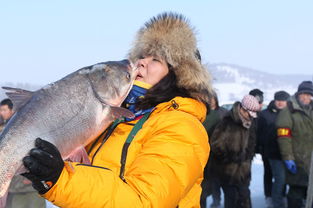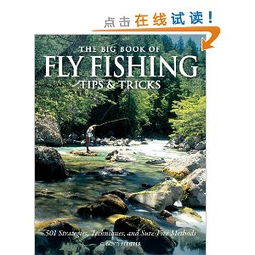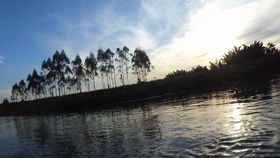Content:
Winter, with its crisp air and serene landscapes, presents a unique challenge and opportunity for anglers. The beauty of ice fishing lies in the quietude of the frozen lakes and the thrill of catching fish in sub-zero temperatures. Whether you're a seasoned angler or a beginner looking to try your hand at ice fishing, here are some essential methods and techniques to help you succeed in the winter wonderland.
Understanding Winter Fish Behavior
Before diving into the specifics of winter fishing methods, it's crucial to understand how fish behave during the colder months. In winter, fish become more sluggish and tend to congregate in deeper waters where the water temperature remains relatively stable. They also become more concentrated in areas with food sources, such as underwater structures or vegetation.
Gear and Equipment
Ice Auger
The first piece of essential equipment is an ice auger. This tool allows you to drill holes through the ice to access the water below. For beginners, a hand-crank auger is a good choice due to its simplicity and lower cost. For more experienced anglers, an electric auger can be more efficient, especially when dealing with thicker ice.
Ice Fishing Rod and Reel
Choose a lightweight rod and reel combo designed for ice fishing. These rods are usually shorter and more sensitive, allowing for better control and detection of bites. A spinning reel is often preferred due to its ease of use and the ability to handle lighter lines.
Line and Lures
Use a monofilament line that is thin and strong, such as 4 to 6-pound test. Thicker lines can spook fish. As for lures, small jigs, minnows, and spoons are popular choices. They mimic the movement of natural prey and are effective in cold water.
Ice Shelter
An ice shelter can provide comfort and protection from the elements. It's not just about staying warm; a shelter also allows you to keep your gear organized and reduces the risk of falling through the ice.

Drilling Holes and Setting Up
Drilling Holes: Start by drilling a hole about 8 to 12 inches in diameter. The size of the hole depends on the number of rods you plan to use and the type of fish you're targeting.
Drop Your Line: Once the hole is drilled, drop your line into the water. It's important to keep your line taut but not too tight to allow for natural movement.
Positioning: Fish tend to move to the edges of underwater structures during winter. Position your hole accordingly to target these areas.
Techniques for Catching Fish
Jigging: This involves moving your lure in a vertical or zigzag motion. It's a great way to attract fish that are near the bottom of the lake.
Trolling: Use a small, slow-moving lure and pull it through the water. This method is effective for catching fish that are suspended in the water column.
Dead Sticking: This technique involves letting your lure sit still on the bottom. It's particularly effective for targeting fish that are less active in cold water.
Using Live Bait: Minnows and other live baits can be highly effective in winter. Fish are more likely to bite on something that moves naturally.
Safety Precautions
Always prioritize safety when ice fishing. Here are some key safety tips:
Check Ice Thickness: The minimum safe ice thickness for walking is usually 4 inches, but this can vary depending on the conditions. Always use a spud (a tool that can be used to test ice thickness) and avoid going onto the ice alone.
Wear Appropriate Clothing: Dress in layers to stay warm. Wear waterproof gloves, a hat, and insulated boots.
Bring Safety Gear: Always carry a first aid kit, a whistle, a flashlight, and a cell phone.
Be Aware of Ice Conditions: Ice can be unpredictable, especially after snowfall or during thaws. Stay alert and be prepared to move to a safer location if necessary.
Conclusion
Ice fishing is a rewarding experience that requires patience, preparation, and the right techniques. By understanding winter fish behavior, choosing the right gear, and employing effective fishing methods, you can increase your chances of success. Remember to always prioritize safety and enjoy the serene beauty of winter on the ice. With the right approach, you'll find that the cold doesn't have to keep you from reeling in some impressive catches.












